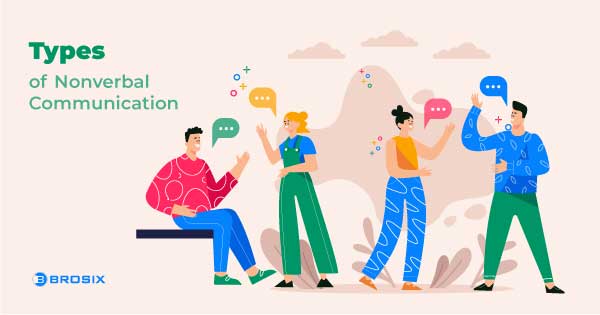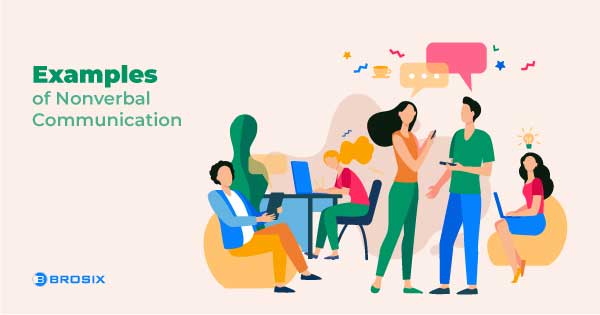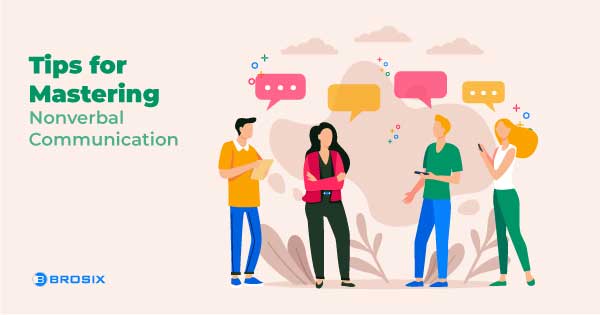Nonverbal communication is crucial in our everyday lives. Whether it’s work, at home, or in the wider world, we all rely on nonverbal cues to understand each other. In recent years in particular, the impact of nonverbal communication in the workplace has become increasingly evident.
With more team members now working remotely, face-to-face interactions are growing less common. While messaging apps, and audio conferencing tools can help us to stay connected, they often lack the facets of nonverbal communication which help to preserve company culture. That’s why so many business leaders have implemented video conferencing tools into their communication strategy.
Only when we can see a person’s facial expressions, posture and other nonverbal factors, can we form a truly significant emotional connection with them. Understanding the power of nonverbal communication can help business leaders to build better collaboration strategies, and help team members to connect more effectively with their colleagues.
What is Nonverbal Communication? The Basics
So, what is nonverbal communication exactly?
In simple terms, it’s all the ways we communicate without actually speaking to each other. Think about the most meaningful conversations you’ve had with peers or loved ones. The chances are you were paying attention to more than just the words they said.
As human beings, we send messages both consciously and subconsciously through a variety of different mediums, from hand gestures to facial expressions and the use of eye contact. These nonverbal cues are more significant to communication than most people realize. Some studies suggest that anywhere between 55% and 93% of communication has nothing to do with the words we say.
Without access to nonverbal cues, it can be difficult to understand a person’s intent, sentiment and requirements. We respond to nonverbal cues and behaviors subconsciously, using them to build stronger emotional connections with the people we meet.
As such, if you’re not nurturing nonverbal communication in your business, you may find that you struggle to build a collaborative workforce.
For business owners, employees, and everyday people alike, learning how to understand and manage nonverbal communication can be crucial to success.
Why is Nonverbal Communication Important?
So, why is nonverbal communication so important? The simplest answer is that nonverbal communication helps us to understand each other. The things you do, the way you present yourself and even your tone of voice all give more meaning and context to the words you say. With effective nonverbal communication, both inside and outside of the workplace, you can:
- Build trust and clarity: Nonverbal signals might be subtle, but they carry a lot of meaning. Posture, facial expression and eye contact help us to understand what other people are saying, and infer the sentiment in the words. These tools can help to strengthen bonds between coworkers and lead to better collaboration and cooperation.
- From stronger bonds: While everyone has different communication methods, styles and skills, we all use body language. Leveraging the right resources correctly can be an excellent way to strengthen bonds between team members, and ensure better relationships in the workplace. Constructive nonverbal communication can even help to minimize disputes.
- Bridge language gaps: In today’s global workforce, it’s becoming increasingly important to bridge the gaps between people who use different forms of language. When people are struggling to form the right words to connect with each other, nonverbal cues act as a universal source of insight and guidance.
- Improve inclusivity: Additionally, nonverbal cues can help to make a workplace more inclusive, particularly for those who suffer from hearing difficulties. Being able to see a person’s facial expression and posture during a conversation can help people better understand what that individual is trying to say.
- Foster productivity: Nonverbal communication is crucial to effective communication. When people can connect clearly and consistently in the workplace, they’re more likely to work collaboratively, overcome issues and achieve their goals. As such, good nonverbal communication can help to make teams more productive.
Types of Nonverbal Communication
Nonverbal communication comes in many different forms, from facial expressions, to where we position ourselves when talking to other people. Here are some of the most common forms of nonverbal communication, and how they impact our conversations:
1. Facial Expressions
Facial expressions make up a significant part of nonverbal communication. A smile or frown immediately tells us a lot about the context of a conversation and the intent or sentiment behind the speaker. Expressions of happiness, sadness, worry and anger are all universal concepts that many of us can instantly understand at a glance.
2. Paralinguistics
Paralinguistics refer to the aspects of verbal communication that don’t include the words we actually see. For instance, a person’s tone of voice can either help to build trust and authority in the workplace, or lead to conflicts between team members. How loud you speak, the speed of your words and even the pitch you use can play a part too. The way you say things makes a huge difference to how your words are perceived by others.
3. Kinesics
Kinesics, or gestures, are the body movements that we use to get our point across or express something important. Waving, pointing, moving your arms around and making hand gestures during a conversation can help to highlight passion, interest and various other factors. Kinesics can also be a way of directing people and giving them context such as saying “Move something over there” and pointing to the direction in question.
4. Body Language
Perhaps one of the most commonly referenced forms of nonverbal communication, body language is crucial to conveying information. Crossing your arms or legs in a meeting can make you look withdrawn and defensive. Slouching in an interview makes you seem disinterested. On the other hand, standing up straight and managing your posture can convey confidence and authority.
5. Proxemics
Proxemics refers to the art of using proximity to form connections and emotional bonds. If you sit close to someone in a meeting when talking to them, they’re more likely to perceive you as friendly, whereas standing far away could infer that you’re distancing yourself from the discussion. However, proximity can be difficult to master, particularly in today’s world. How we perceive the use of proximity is often determined by the relationships we already have with people.
6. Haptics
Haptics is another word for “touch”. This is a difficult nonverbal communication strategy to get right in the workplace, as touching someone can be inappropriate. However, placing your hand on someone’s shoulder during a supportive conversation can show care and compassion. Haptics are once again influenced by our socialization and upbringing. Business leaders need to be careful to ensure that their use of touch adheres to employee expectations.
7. Gaze
Eye contact is one of the most important tools for conveying meaning. Particularly in interviews and significant conversations, eye contact can show sincerity and build trust. In the remote working world, companies have even begun developing AI tools that can help to replicate eye contact during video conferences. Eye contact can be a good way to demonstrate honesty and transparency in the workplace.
8. Appearance
How you present yourself physically is another factor that can impact the quality of a conversation. The way you dress and groom yourself gives cues to other people about the kind of person you are. That’s why it’s so important to choose the right outfit for corporate meetings, job interviews and events. Your appearance influences how people perceive you.
Examples of Nonverbal Communication
Mastering nonverbal communication is crucial to ensure that each conversation you have with another person is clear and well-understood. However, it can be difficult to fully comprehend and manage nonverbal communication. After all, a lot of the cues we give off non-verbally are subconscious.
Here are some nonverbal communication examples you may be familiar with, to help you understand how this form of communication influences your life and relationships.
Nonverbal communication at home
Nonverbal communication is common in our personal lives. For instance, if you speak to a person in your life and ask them how they’re doing, they can say “I’m fine” and those two words can infer a number of different things. Their tone of voice, posture and even whether they make eye contact and look at you consistently will help you determine if they’re telling the truth.
Other forms of nonverbal communication at home can include sitting close to someone you love when you’re speaking to them, greeting your loved ones with a smile to show them you’re happy to see them, or touching someone when talking to them.
Nonverbal communication at work
Nonverbal communication is also relatively common in the workplace, though it has become more difficult to master in today’s age of remote and hybrid work. Using excitement in your voice when you’re hosting a team meeting, making eye contact with a staff member, or even adjusting your posture when sitting in front of a video camera can help those you’re engaging with to deduce meaning.
In today’s world of remote work, the best way to ensure you can share nonverbal communication with all employees is to utilize the right technology. Solutions like Brosix allow employees to choose between simple messaging tools when they need to make a statement and video conferencing solutions when they want to connect with someone on an emotional level.
Tips for Mastering Nonverbal Communication
Now you know what nonverbal communication is, and you understand the different ways people communicate nonverbally, the next step is learning how to master this crucial form of interaction. Although excellent nonverbal communication can take time to fully grasp, it can deliver amazing results when used successfully, from better relationships to improved team work.
Here are some tips to help start you on the road to stronger communication:
- Be mindful of your own nonverbal cues: The first step in mastering nonverbal communication is recognizing the signals you’re sending. Pay attention to your gestures, posture, body language and even your tone of voice when you’re communicating. Consider how your behaviors change based on your emotions, and think about whether you’re sending the right message with more than just your words.
- Examine other people: Paying attention to others can also be a fantastic way to improve your nonverbal communication skills. When you’re talking to other people, either in-person, or through video call, focus on the gestures they use, their tone of voice and their posture. Becoming familiar with the types of nonverbal communication methods other people use will help you to understand them better in the months and years to come.
- Look for inconsistencies: Examining the inconsistencies between what people say and how they act can be extremely telling, particularly in the workplace. For instance, if someone says they’re happy with a task, but they divert their eyes or lower their voice, then you can probably tell that there’s something going on beneath the surface. Examining inconsistencies as a business leader can give you a unique opportunity to determine when people aren’t being entirely honest in your workforce.
- Think before you act: A lot of the nonverbal signals we send are ingrained over years of learned behavior. We act almost subconsciously in some instances, but this can mean we end up sending the wrong message. Train yourself to think before you act. You might not be able to control your facial expressions all the time, but you will be able to prevent yourself from doing things that could damage relationships with your peers.
- Ask before you assume: Finally, remember that certain forms of nonverbal communication can vary depending on a person’s culture, background and upbringing. Just as we have different methods of verbal communication as individuals, we also use our body language in different ways too. If you’re not sure what someone is trying to convey with their nonverbal cues, ask them what’s going on.
Don’t Underestimate Nonverbal Communication
The words you say when communicating with someone, both inside and outside of the workplace, are important to sending a clear and consistent message. However it’s also vital to think about the signals you’re sending beyond those words. Learning how to master your nonverbal communication cues, and how to recognize the signals others send, can lead to more clarity and consistency in the workplace.
As a business leader, you can evaluate the nonverbal cues of your team members to understand their sentiment and learn more about their needs and expectations in the workplace. As an employee, you can examine the nonverbal cues of others to improve clarity and understanding, and pave the way for excellent collaboration.
Remember, in the world of remote work, video conferencing and messaging tools like Brosix can help you understand and share nonverbal cues. Even in video sessions, you can still pick up on a person’s tone, facial expressions and posture.









